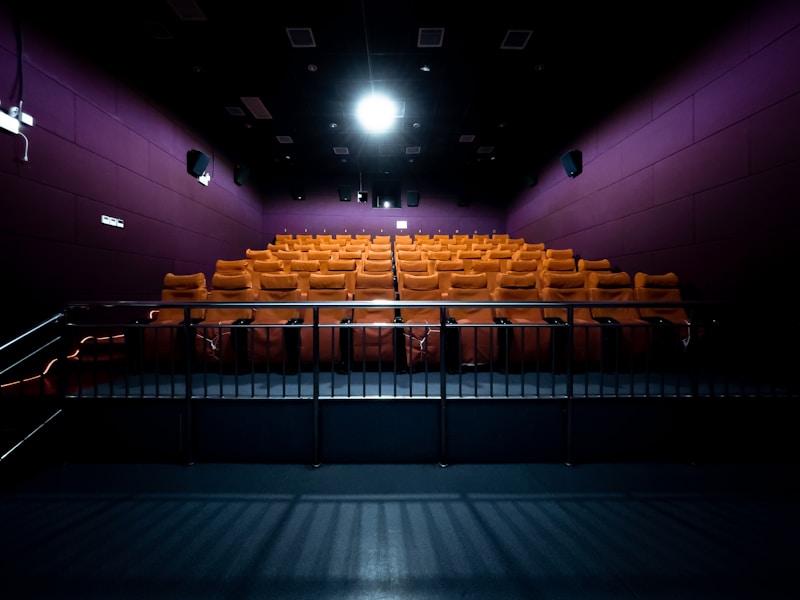Mastering Artful Seating Charts: A Comprehensive Guide for Events
Introduction to Artful Seating Charts
Creating an unforgettable event begins with meticulous planning, and one of the most crucial elements is designing artful seating charts. Whether you're organizing a wedding, corporate event, or birthday celebration, the seating arrangement can significantly influence the atmosphere and flow of the gathering. In this article, we will explore what artful seating charts are, why they are essential, and how you can create visually appealing seating arrangements that enhance your event experience.
What Are Artful Seating Charts?
Artful seating charts are visually organized designs that indicate where guests will be seated at an event. They serve not only as a guide for guests but also as an artistic element that can complement the event theme. An artful seating chart showcases creativity and adds a personal touch to your gathering, transforming a simple list of names into a memorable focal point.
Importance of Artful Seating Charts
Seating arrangements can impact interaction dynamics among guests and the overall success of the event. Here are a few reasons why artful seating charts are essential:
- Facilitates Guest Interaction: Thoughtful seating arrangements can encourage guests to mingle and engage with one another, enhancing the social experience.
- Aesthetic Value: A well-designed seating chart can act as a decorative element at your event, adding to the overall ambiance.
- Prevents Confusion: Clearly displaying seating assignments helps guests find their places quickly, eliminating confusion and awkward moments.
- Personal Touch: Customizing seating charts can reflect your personality or the theme of the event, making it more special.
Creating Your Artful Seating Chart
Now that you understand the significance of seating charts, let’s delve into the steps to create your own artful seating chart that captivates your guests.
Step 1: Gather Your Guest List
Before you can create a seating chart, you need a complete list of all your guests. This list should include their names, RSVPs, and any special requests or considerations. Take note of relationships and potential interactions to avoid seating conflicts.
Step 2: Define Your Layout
Consider the layout of your venue. Will it be a formal dinner with round tables, or a casual cocktail style? The setup will influence how you arrange your seating chart. Below is a basic illustration of different layout options:
| Event Type | Seating Layout |
| Wedding Reception | Round tables with assigned seats |
| Corporate Meeting | U-shaped or classroom style |
| Birthday Party | Casual seating with a mix of tables |
Step 3: Consider Guest Relationships
It's essential to keep in mind your guests' relationships when assigning seats. Romantic couples should sit together, while friends or family members should be arranged nearby. Take note of any potential conflicts; for instance, if two guests don't get along, they should be seated far apart.
Step 4: Select an Artistic Design
Your seating chart doesn't have to be a simple list. Choose a design that reflects your event's theme and showcases your creativity. Consider using graphics, colors, and fonts to enhance the visual appeal. A chalkboard, for example, can be elegant for a rustic wedding, while a sleek digital display might suit a modern corporate event.
Step 5: Implement Technology
In today’s digital age, utilizing technology can streamline your seating chart creation process. There are various online tools and software that allow you to design and customize seating charts quickly. Explore options like:
- AllSeated: Offers interactive floor plans and guest management features.
- Social Tables: Helps visualize and plan seating arrangements.
Creative Ideas for Artful Seating Charts
Here are some innovative ideas to inspire your artful seating chart design:
1. Themed Designs
If your event has a specific theme, such as vintage or tropical, design your seating chart accordingly. Use relevant colors, fonts, and imagery that align with the theme, which will tie the overall event together.
2. Use of Table Numbers
Alongside your seating chart, incorporate table numbers that also reflect the theme. For instance, if your theme is travel, use numbers related to famous landmarks or cities. This will add an extra layer of creativity.
3. Interactive Elements
If appropriate, consider making your seating chart interactive by allowing guests to take part in a fun element. For example, using a flower or leaf with guests' names can create an engaging experience.
4. Digital Displays
Utilizing technology, digital screens can display your seating chart in real-time, allowing guests to navigate easily. This option is especially beneficial for larger events with substantial guest lists.

Final Thoughts
Artful seating charts play a vital role in ensuring your event is memorable and enjoyable. By dedicating time to thoughtful planning, from understanding your guest list to creating engaging designs, you can enhance the overall experience for your attendees. Remember to consider your event theme and guest relationships carefully, as these factors will guide your seating arrangements.
In conclusion, whether you opt for a traditional seating chart or take a more modern approach, the aim is the same: to create a welcoming atmosphere where guests can enjoy themselves. When designing your artful seating chart, let your creativity shine through while being mindful of the connections among your guests. With these ideas and methods, you are well on your way to mastering the art of seating arrangements for your next event.